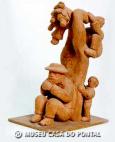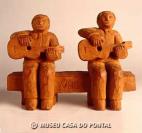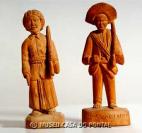NEARBY LOCATIONS
LOCAL ARTISTS
WORKED THEMES
Nossa Senhora da Glória - SE
The municipality lies in the hinterland or alto sertão region of Sergipe State, around 80km from the capital Aracaju and accessed by federal highways BR-235 or BR-101. At an altitude of 291m Nossa Senhora da Gloria has a semi-arid climate. Its population is estimated to be 32,926 in an area covering 756km² (IBGE, CNM, 2011). The occupation of the municipality’s area dates from early 17th century with the start of agricultural and livestock farming that attracted new settlers. In 1922 the district was created and “officially named Nossa Senhora da Gloria” and in 1928 it was made a municipality, “separating from the municipalities of Garuru and Porto da Folha” (IBGE, 2011). The reality and tales of the sertão, or hinterland, inspired Cicero Alves dos Santos to develop his art. Better known as Véio, a nickname from the time when he lived with his elders, he was born in 1947 in Nossa Senhora da Gloria. To the displeasure of his parents Véio was never interested in their farming work, and when he was five years old he began his art by modelling animal and human figures in beeswax. Soon after wax the artist discovered wood, which became his main form of expression. His work expresses his concern for “the environment and reviving the history of his sertanejo or country people” (Montes, 2012). His figures range in size from huge sculptures to tiny figures. His theme of the Northeast semi-arid hinterland includes its everyday events and the bandit Lampião and his partner Maria Bonita.



